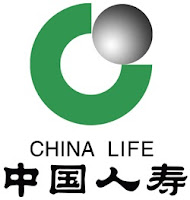best insurance stock 2013 : While we expect strong first-quarter 2013 results in the property and casualty insurance sector, we are more cautious on the group overall given improved valuation and potential for increasing competition going forward, given strong balance sheets and growing capacity.
We are estimating an increase of just over 1% in tangible book value with about 2% positive impact from earnings per share offset partly by about 1% negative impact from fixed-income marks. We increased our first-quarter estimates about 15% on average reflecting lower catastrophe expectations and some higher alternative-investment returns. For the full years 2013 and 2014, our estimates are up about 4% and 2%, respectively.
We don't see much improvement in return on equity (ROE) over the next couple of years. Our 2013 and 2014 estimates imply average ROE of 9.5% and 9.7%, respectively. While results will benefit from some rate on the insurance side and continued capital management, we don't think this represents enough of a tailwind to materially improve ROEs for the group. Offsetting these positives, net interest income (NII) remains low, balance sheets remain strong (resulting in ongoing risk of competition) and reserve releases could slow (although trends there have continued to be better than expected).
While we think insurance pricing will trend in positive territory, further acceleration seems unlikely and moderation of improvement is possible.
On the property reinsurance side, there is increasing capacity and competition from alternative capital that will likely continue to put pressure on strong returns. We feel this dynamic offsets any incremental demand changes taking place in the market. In our view, further momentum for the stocks rests greatly on continued improvement in the core accident year loss ratios.
While this should likely continue given the benefits of prior rate increases, 2012 is a somewhat tougher comparison with regard to noncatastrophic loss levels and any shortfall versus expectations for improvement in core loss ratio going forward could negatively impact the group. We don't think this is likely to occur in the first quarter but is a risk to keep in mind going forward.
Valuations already reflect the expectation of good results for the first quarter of 2013 in our view. The property and casualty underwriters are up 16% on average year-to-date versus the Standard & Poor's 500 up 9% and the Financial Select Sector Index up 10%.
Price-to-tangible book value on our group of companies has increased to 1.07 times (1.16 times excluding accumulated other comprehensive income (AOCI)) versus 0.98 times prior to fourth-quarter 2012 results.
We do not see potential for any meaningful multiple expansion from this level without a better ROE outlook. We increased our price targets about 7% on average reflecting book value growth, some earnings increase, and higher multiple (up about 0.07 times on average from previous price targets).
We have continued to favor stocks that we feel trade at discounts to the group (or are undervalued relative to earnings power and franchise strength) and have specific catalysts in addition to insurance rate increases and capital management (mix changes, mergers and acquisitions (M&A), levers to drive earnings above forecast).
While generally we feel insurers or companies with insurance exposure are better positioned than reinsurers, valuation differences make individual stock selection increasingly more important in our view.
In the large-cap space, we continue to favor Ace (ticker: ACE) and XL Group (XL). In the mid-cap space, we favor Axis Capital Holdings (AXS), Hanover Insurance Group (THG) and Allied World Assurance Co. Holdings (AWH). We favor Maiden Holdings (MHLD) in the small-cap arena.
We are more cautious on Travelers (TRV) and Arch Capital Group (ACGL) given valuation and Montpelier Re Holdings (MRH) given property reinsurance focus.
